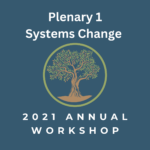By IDIA
The International Development Alliance (IDIA) is an informal platform for knowledge exchange and collaboration around development innovation. Established in 2015 with a shared mission of “actively promoting and advancing innovation as a means to help achieve sustainable development”, including through the UN’s 2030 Sustainable Development Agenda, it currently comprises the following entities investing resources in the development innovation space: Australian Aid, UNICEF/UNDP, USAID, UKAID (DFID), Canada, World Bank Group, The Rockefeller Foundation, the Bill and Melinda Gates Foundation, SIDA, Grand Challenges Canada, the Global Innovation Fund and Results for Development.
A key contribution IDIA seeks to make is to enhance the global evidence base and build understanding of the role of innovation within international development. To do this, IDIA establishes Working Groups that bring together experts from within and beyond IDIA member agencies to collaboratively develop common platforms for supporting innovation from idea to scale, shared learning and improved impact measurement.
In June 2017, IDIA published three documents:
- Insights on Scaling Innovation
- Scaling Innovation – Good Practice Guides
- Insights on Measuring the Impact of Innovation
They can be found on this Web site: http://insights.globalinnovationexchange.org
Insights on Scaling Innovation represent the culmination of a year-long review and synthesis of learning by the IDIA Working Group on Scaling Innovation, facilitated by Thomas Feeny and Johannes Linn at R4D, who also created this report. It focuses on various challenges, lessons learned and practices of funders seeking to take promising development innovations to scale. It draws on the experience and learning of a wide range of bilateral, multilateral, philanthropic and civil society actors who came together in a Working Group on Scaling Innovation facilitated by the International Development Innovation Alliance (IDIA). While it does not represent the formal strategy or approach of any one single agency in the Working Group or IDIA itself, it does reflect areas of overlapping interest and terminology that can be used as a point of reference for interested stakeholders in reflecting on, and enhancing, their own approaches and guidance on scaling innovations.
These insights on scaling have been organized into three discrete (yet complementary and interdependent) areas: first, dividing the scaling process into six over- lapping Stages, stretching on a continuum from ideation through to sustainable scale. Second, eight Good Practices have been identified across these stages to help funders of development innovation enhance the impact of their support. Finally, a matrix of Influencing Factors that will either accelerate or constrain the scaling process has been created, with guidance on how funders can use these to initially assess (and then continually monitor) the scalability of an innovation over time. Together, these scaling stages, good practices, and influencing factors provide funders with an experiential (rather than theoretical) architecture for scaling innovation that may be helpful to inform their own approaches.
Scaling Innovation – Good Practice Guides is designed to be read in conjunction with the Insights on Scaling Innovation paper. The eight good practices that are at the heart of the scaling architecture presented in that report are unpacked in the Good Practice Guide in more detail, and provide a curated selection of tips, tricks, tools and resources that can help enhance the practice and impact of those exploring innovation in international development. Each Good Practice Guide adopts the same structure, comprised of the following sections: (i) Relevant scaling stage(s); (ii) Glossary of terms; (iii) Why is this a good practice? (iv) What data/ information do I need? (v) What tools and resources can help me? and (vi) Empirical insights for funders.
Insights on Measuring the Impact of Innovation focuses on various challenges and lessons learned of funders seeking to measure the impact of development innovations they support. It draws on the experience and learning of a wide range of bilateral, multilateral, philanthropic and civil society actors who came together in a Working Group on Measuring Impact facilitated by the International Development Innovation Alliance (IDIA). These Insights provide a broad architecture to help guide funders in navigating the long and complex process of impact measurement, while also offering guidance to help innovators and partner organizations develop/enhance their own impact measurement approaches. They have been synthesized to create a high-level architecture for measuring the impact of innovation that is built around a minimal set of ‘core’ indicators, with ‘lives saved and improved’ being the ultimate measures of success. These indicators are organized in terms of three key impact domains: (1) ‘Impact on Beneficiaries’, ‘Scale’ and ‘Sustainability’, with additional guidance on what to measure when assessing the potential impact of an innovation (the ‘Leading’ Indicators) and what to mea- sure when assessing the actual, achieved impact (the ‘Outcome’ Indicators).


